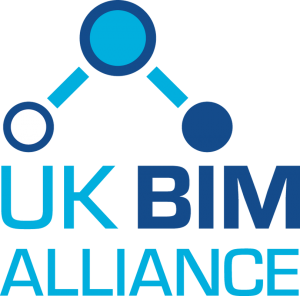The UK BIM Alliance will help, encourage and support industry to adopt BIM Level 2 and provide the digital transformation that is required for a modern built environment. BIM Today outlines how this will be achieved
The UK BIM Task Group has been responsible for the delivery of the government’s BIM Level 2 programme which started with what is referred to as “the mandate”, which translates into the requirement set by government for collaborative 3D BIM and digital data exchange on public sector projects. In spring 2016, the government called for the wider industry to adopt BIM Level 2, saying that it should be their responsibility to lead the transition to BIM Level 2 as “business as usual” – not just for centrally procured public sector projects. The call is now answered in the form of the UK BIM Alliance which officially launched in October.
The UK BIM Alliance will provide the leadership for implementation of BIM Level 2 across UK industry, leaving the BIM Task Group to concentrate its efforts within government departments on the implementation of BIM Level 3 and Digital Built Britain.
Anne Kemp, Atkins Fellow and Director, Executive Vice-Chair of BuildingSmart UK and part of the Global BIM Strategy team is leading the formation of the UK BIM Alliance as its Chair. At the ICE BIM 2016 conference in October, she outlined the focus and aims of the group highlighting that we are at the end of one phase and the beginning of another. She warned that we are:
“In danger of thinking we need to race to compete to achieve BIM Level 3, and leaving behind all the good work that’s been done with BIM Level 2 – those foundations which are going to differentiate us in the market and on the global stage. We’ve got to change our behaviours.”
The industry is in transition and needs to step up to facilitate and ensure the implementation of BIM Level 2 across the whole of the industry. Kemp said:
“Industry also needs to work in close cooperation with government to take on board the standards and the guidance which is going to be available through the BSI website.”
The UK BIM Alliance’s Strategic Plan puts forward its current collection of key strategic documents: Manifesto, Vision, Mission and Values, Strategic Plan, Road Map and Measurement & Metrics. This document needs to be read in conjunction with the prior document “BIM in the UK: Past, Present & Future”, which sets out the context for the Alliance. In explaining what the Alliance will be, Kemp outlined that:
“[The Alliance] needs to be a vehicle for bringing the industry together into an environment where we can trust each other and collaborate. This is going to be tough. We need to open; we need to be transparent, but we need to challenge ourselves. I hope that’s what you will expect of the Alliance – that’s what we will expect of you when you’re in the Alliance environment. And we can achieve this together.
“The Alliance will not be receiving money from government; that will be for our partner organisations. We’ll be there to organise, to facilitate, to identify gaps, to support you on this journey, but we will be looking for support from industry in time and funding priority projects. It’s most likely it will be our member organisations who will be leading on those.
“How are we organised? This is important. The strategy we will really be focusing on is increasing awareness, both in the supply and the demand chain, educating, being able to help everybody get through the myriad of different courses that are available including certification and accreditation.
“Case studies: absolutely celebrating them, but also challenging where perhaps it would be healthier to share our worries; the things that would hurt us, the things which aren’t going right. How can we help each other tell those stories? Because that’s where we’re really going to learn. It’s no good just showing the glossy stuff.
“The business case. Every priority project that we identify, for instance, will have a justification for the why and the resources needed for funding the programme. We really need to be pushing the business case for why are we digitally transforming. Why do we need BIM Level 2? We have to be able to convey the experience of implementing BIM Level 2 and why we should do it. What does it give us?
“And then the optimisation. How can we be innovative whilst doing BIM Level 2? I’m a geospatial person – I do laser scanning and drones and data analysis. We can do that in BIM Level 2. We can be looking at the business outcomes, it just needs to very clearly express these are the outcomes we need to achieve to integrate it in the structure.”
Fostering collaboration and culture change, innovation and interoperability is a key strategy for the Alliance, working to:
- Support the rationalisation and alignment of existing BIM Level 2 Standards and tools;
- Support the creation of tools to help BIM Level 2 adoption;
- Support the creation of tools to help BIM Level 2 project delivery;
- Support the creation of self-measuring BIM Level 2 capabilities.
- Support the transition to an industry culture conducive to collaboration
The growing list of signatories is a testimony to the support the UK BIM Alliance is receiving. Kemp said it “is an absolute joy going around and talking to the captains of our industry. How supportive they are, saying we must step up, we can’t sit on our hands; we need to take this initiative, but we need to work together. If we just compete we’ll fail; we’ll fall flat on our faces.”
She continued with the theme of collaboration and an important demand:
“That feeling that we will be stronger together is really coming through. The sad thing about it is the bad blood around the industry. What I am demanding is that we have an amnesty. I am interim chair of the UK chapter of buildingSMART, and my goodness, there’s a lot of bad feeling between different competing organisations that we have to push away if we’re going to be able to produce things like LEXiCON and Product Data Templates. Let’s have an amnesty, put all that bad blood to one side and work together.”
Kemp called on industry to help in establishing the Alliance so it can genuinely serve in the right way. They want to know how they can help, how they can help the company you work for and how they can help the construction industry. Your answers to these questions will help shape how they represent the whole industry.
Kemp concluded by saying that:
“The Alliance is us – it’s you, it’s me. It’s individuals working together. There’s no one organisation that will drive this. The ICE is project managing the BIM development side of things to ensure industry understands and embraces that.
“We will achieve this together, so let’s collaborate, not compete.”

If you would like to contact or get involved with the UK BIM Alliance, please email:
Chair- Anne Kemp: anne.kemp@atkinsglobal.com
PR/Comms lead – Chris Witte: info@ukbimalliance.org
BIM Regions Chair – John Eynon: johneynon@me.com

















